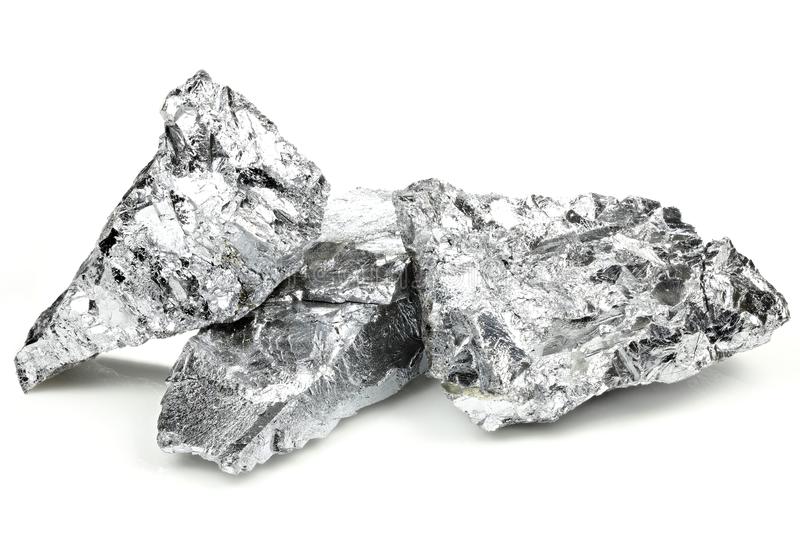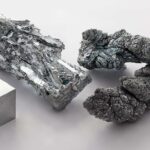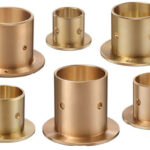Chromium is a chemical element which has the symbol Cr and atomic number 24. It is the first element in Group 6. It is a steely-gray, lustrous, hard and brittle metal which takes a high polish, resists tarnishing, and has a high melting point. Chromium oxide was used by the Chinese in the Qin dynasty over 2,000 years ago to coat metal weapons found with the Terracotta Army. Chromium was discovered as an element after it came to the attention of the western world in the red crystalline mineral crocoite (lead(II) chromate), discovered in 1761 and initially used as a pigment. Louis Nicolas Vauquelin first isolated chromium metal from this mineral in 1797. Since Vauquelin’s first production of metallic chromium, small amounts of native (free) chromium metal have been discovered in rare minerals, but these are not used commercially. Instead, nearly all chromium is commercially extracted from the single commercially viable orechromite, which is iron chromium oxide Chromite is also now the chief source of chromium for chromium pigments.
Applications
The strengthening effect of forming stable metal carbides at the grain boundaries and the strong increase in corrosion resistance made chromium an important alloying material for steel. The high-speed tool steels contain between 3 and 5% chromium. Stainless steel, the main corrosion- proof metal alloy, is formed when chromium is added to iron in sufficient concentrations, usually above 11%. For its formation, ferrochromium is added to the molten iron. Also nickel-based alloys increase in strength due to the formation of discrete, stable metal carbide particles at the grain boundaries. For example, Inconel 718 contains 18.6% chromium. Because of the excellent high-temperature properties of these nickel superalloys, they are used in jet engines and gas turbines in lieu of common structural materials.
The relative high hardness and corrosion resistance of unalloyed chromium makes it a good surface coating, being still the most “popular” metal coating with unparalleled combined durability. A thin layer of chromium is deposited on pretreated metallic surfaces by electroplating techniques. There are two deposition methods: Thin, below 1 µm thickness, layers are deposited by chrome plating, and are used for decorative surfaces. If wear-resistant surfaces are needed then thicker chromium layers are deposited. Both methods normally use acidic chromate or dichromate solutions. To prevent the energy-consuming change in oxidation state, the use of chromium(III) sulfate is under development, but for most applications, the established process is used. In the chromate conversion coating process, the strong oxidative properties of chromates are used to deposit a protective oxide layer on metals like aluminium, zinc and cadmium. This passivation and the self-healing properties by the chromate stored in the chromate conversion coating, which is able to migrate to local defects, are the benefits of this coating methodBecause of environmental and health regulations on chromates, alternative coating method are under development.
Anodizing of aluminium is another electrochemical process, which does not lead to the deposition of chromium, but uses chromic acid as electrolyte in the solution. During anodization, an oxide layer is formed on the aluminium. The use of chromic acid, instead of the normally used sulfuric acid, leads to a slight difference of these oxide layers. The high toxicity of Cr(VI) compounds, used in the established chromium electroplating process, and the strengthening of safety and environmental regulations demand a search for substitutes for chromium or at least a change to less toxic chromium(III) compounds.
Dye and pigment
The mineral crocoite (lead chromate PbCrO4) was used as a yellow pigment shortly after its discovery. After a synthesis method became available starting from the more abundant chromite, chrome yellow was, together with cadmium yellow, one of the most used yellow pigments. Chromium oxides are also used as a green color in glassmaking and as a glaze in ceramics. Green chromium oxide is extremely light-fast and as such is used in cladding coatings. It is also the main ingredient in IR reflecting paints, used by the armed forces, to paint vehicles, to give them the same IR reflectance as green leaves.
Synthetic ruby and the first laser
Natural rubies are corundum (aluminum oxide) crystals that are colored red (the rarest type) due to chromium (III) ions (other colors of corundum gems are termedsapphires). A red-colored artificial ruby may also be achieved by doping chromium(III) into artificial corundum crystals, thus making chromium a requirement for making synthetic rubies
Wood preservative
Because of their toxicity, chromium(VI) salts are used for the preservation of wood. For example, chromated copper arsenate (CCA) is used in timber treatment to protect wood from decay fungi, wood attacking insects, including termites, and marine borers
Refractory material
The high heat resistivity and high melting point makes chromite and chromium(III) oxide a material for high temperature refractory applications, like blast furnaces, cement kilns, molds for the firing of bricks and as foundry sands for the casting of metals. In these applications, the refractory materials are made from mixtures of chromite and magnesite. The use is declining because of the environmental regulations due to the possibility of the formation of chromium(VI).


